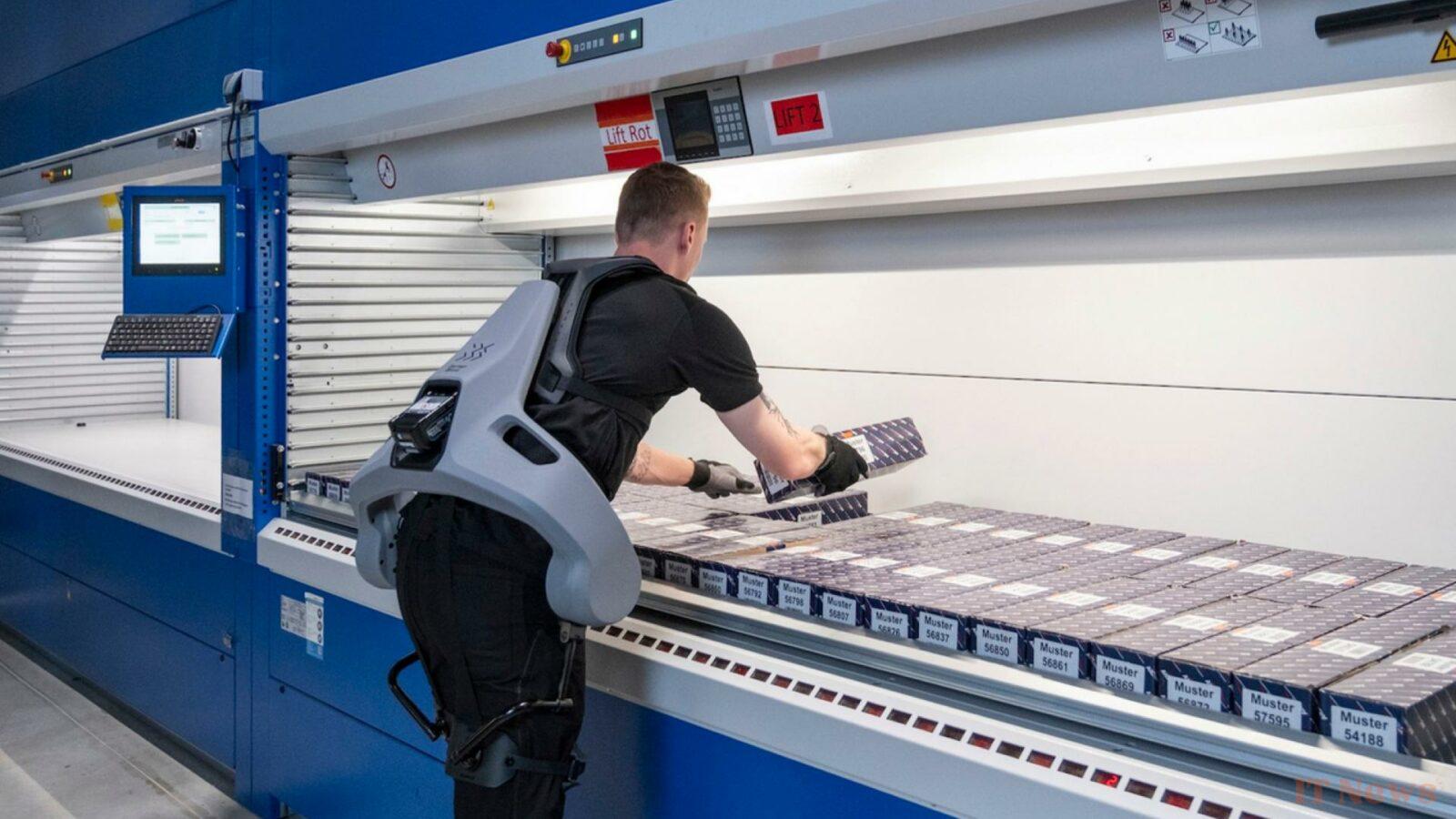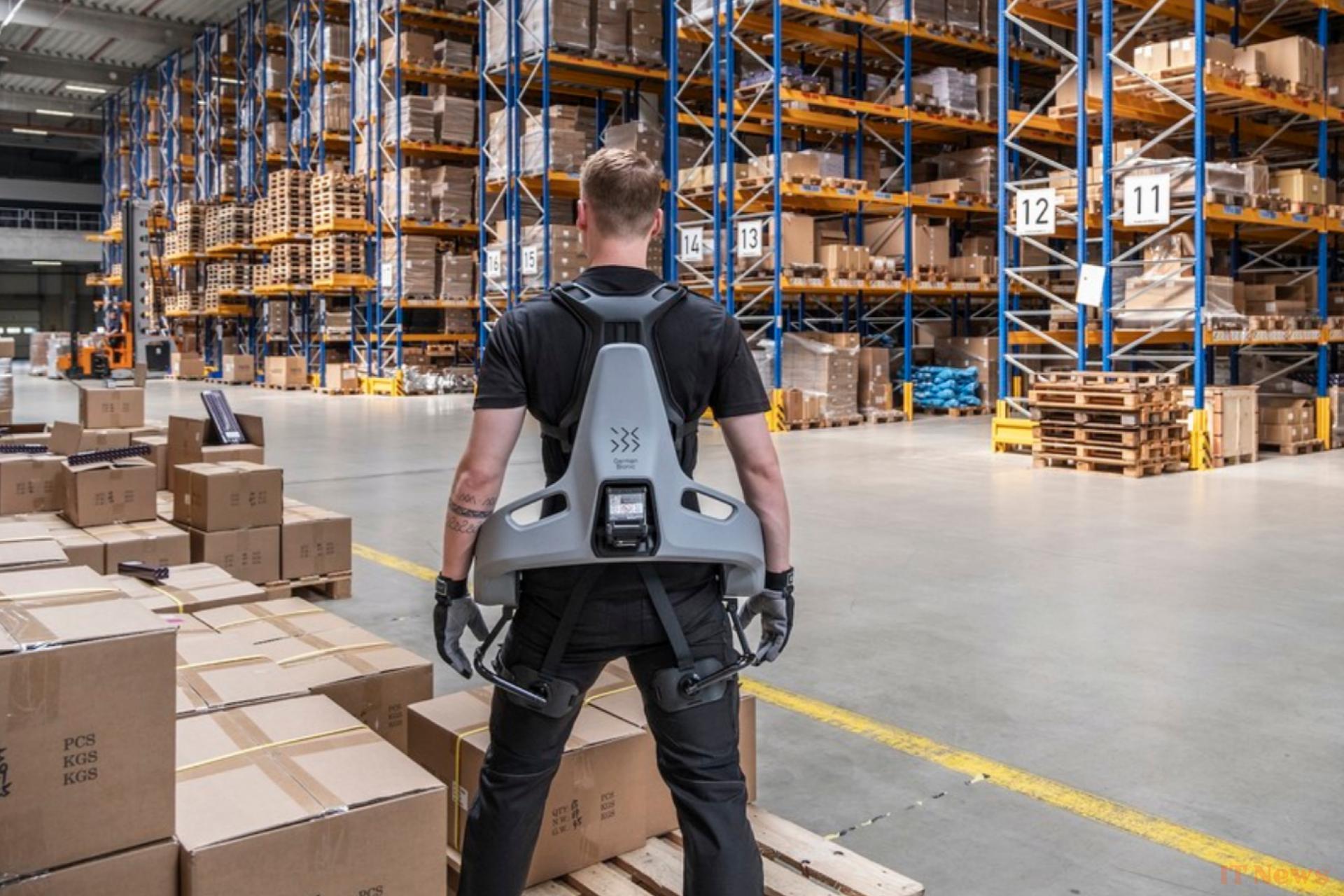German Bionic, a German startup based in Augsburg, has just unveiled Exia, a new AI-powered exoskeleton—a world first that could work wonders in many industries.
In practice, it's a robotic armature designed to be worn by a worker assigned to physically demanding tasks. It's particularly suitable for positions that require lifting heavy loads all day long—an exercise that can have very serious consequences after a few years in the career.
There are currently two categories. On the one hand, there are passive exoskeletons. They are built around a set of springs and shock absorbers that aim to redistribute stress to less fragile areas than the lumbar region or shoulders, for example.
On the other hand, there are also so-called active models, which use sensors and actuators, generally pneumatic. The Exia falls into this category. The whole thing looks like a sort of backpack weighing around 7 kg—a significant weight, but one that is immediately offset by the gain in raw power it provides to its wearer. According to the company, it offers “38 kg of dynamic assistance” — enough to lift medium loads effortlessly, or very heavy objects without putting your lower back at risk.
An AI-powered exoskeleton
But this concept is nothing new. Many companies have already designed such devices. They are even starting to be adopted in certain industries, including automotive, construction, and logistics. But this is still far from being the norm, as these devices are expensive and far from ideal in terms of ergonomics. In particular, they tend to significantly restrict the user's movements, which can make them difficult to use.
This is the problem that German Bionic has focused on with its new Exia. The big new feature is the integration of a control system based on artificial intelligence that constantly trains itself in contact with its wearer. Over time, it learns to anticipate the user's movements so that the user never feels restricted in their movements.
"Exia doesn't just react or think: it actually learns," explains Armin Schmidt, CEO of the company, as quoted by TheNextWeb. "With every movement, it evolves with its user, constantly adapting and evolving to meet the demands of the person and the task at hand."
Machine learning and exoskeletons, the perfect match?
While Exia is unlikely to spark a massive industry rush for exoskeletons, it is a promising innovation that illustrates the potential of machine learning in human augmentation. It's a safe bet that other companies will follow German Bionic's example in developing ever more efficient and ergonomic devices to make workers' lives easier—but not only there.
Because it's not just in the world of work that these AI-boosted exoskeletons could work wonders. The US Army, for example, is already working on military exoskeletons to facilitate the logistics of operations in difficult terrain. Eventually, we can even imagine that they could be integrated into next-generation armor to train battalions of "super-soldiers" with extraordinary physical capabilities.
The medical field also comes into play. The French startup Wandercraft, for example, has designed an exoskeleton called Atalante, designed to restore autonomy to people with disabilities. The results are already evident; in 2024, for example, the Narbonne hospital began using it for the rehabilitation of patients whose mobility has been compromised by a health issue.
With the rise of integrated machine learning, we can expect all of these concepts to progress quite dramatically by the end of the decade. It's therefore worth keeping an eye on this technological niche, which is both fascinating and very useful.




0 Comments